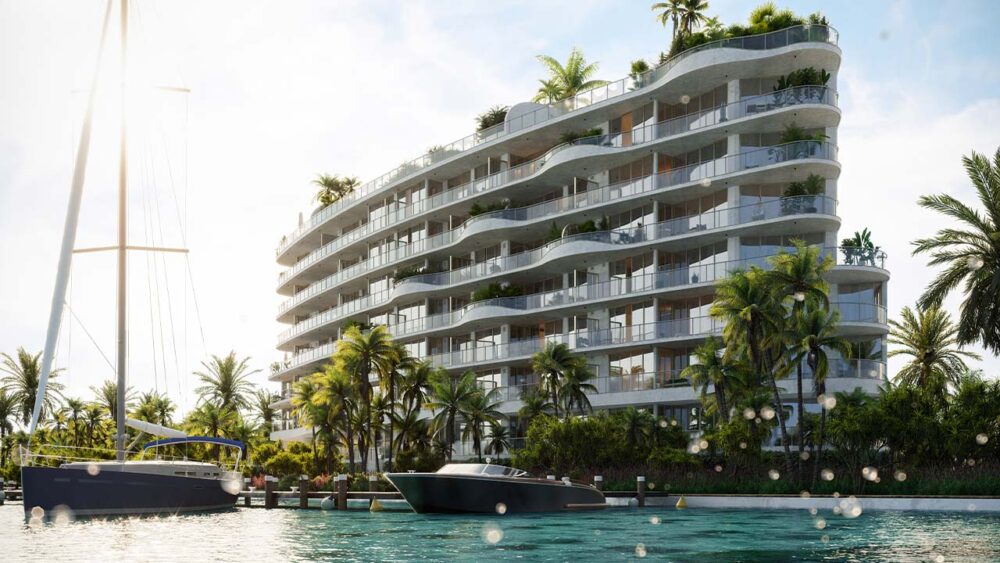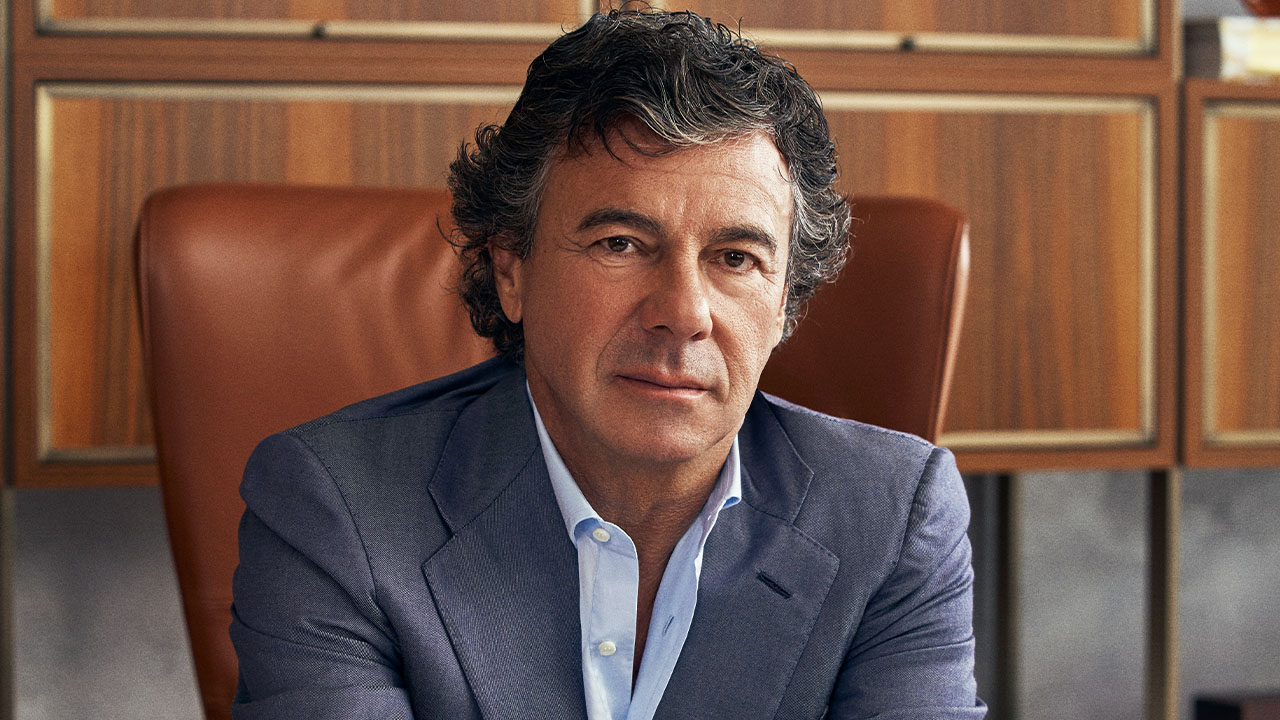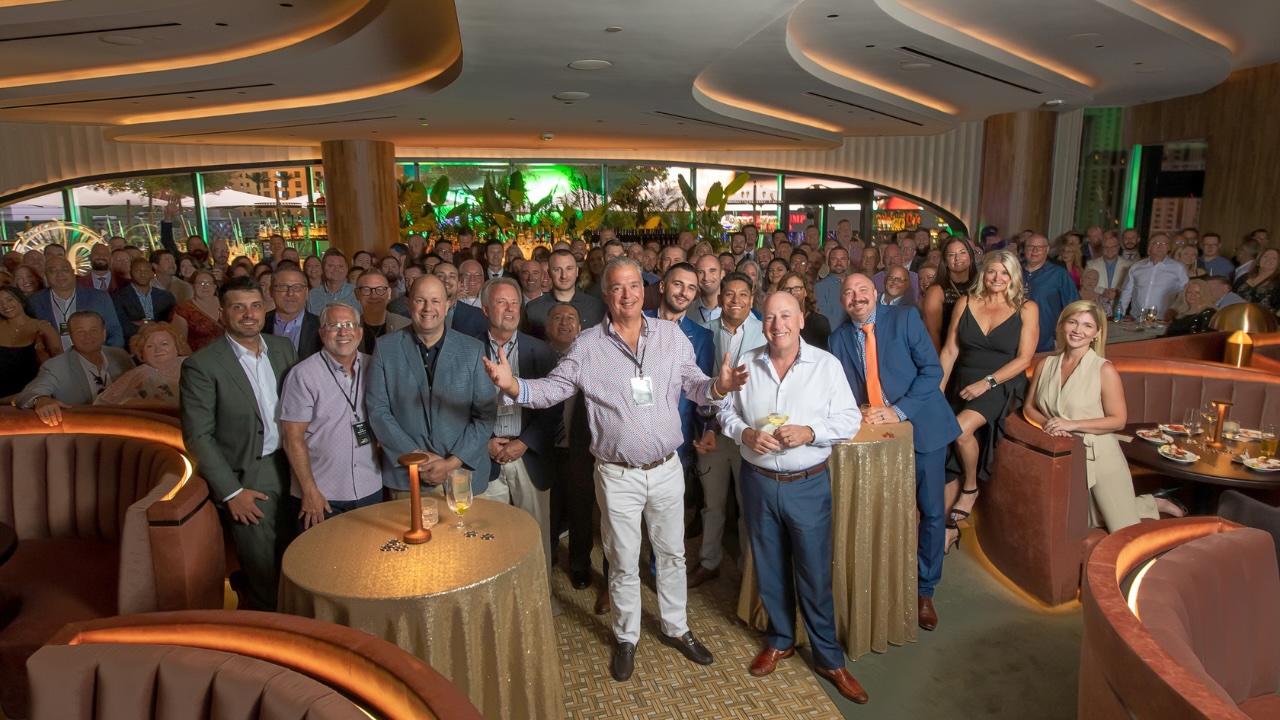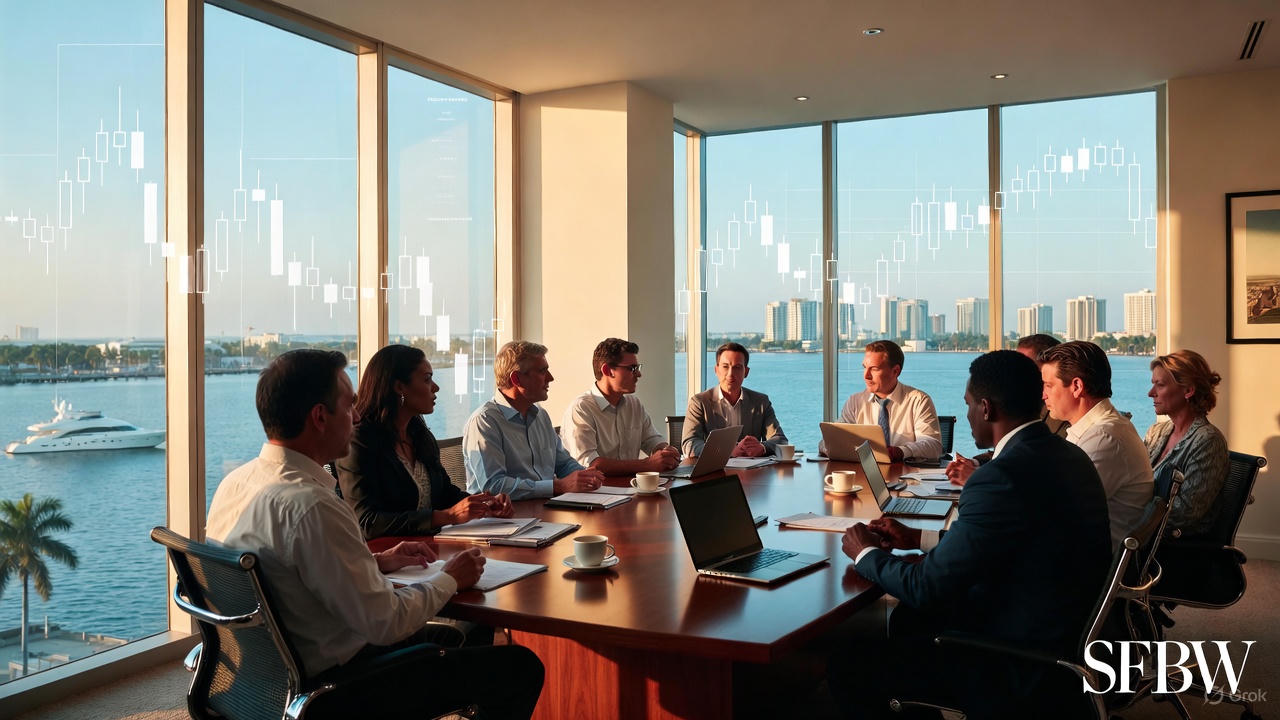Look at luxury condos in the Miami area and you can see Ugo Colombo’s fingerprints all over. In 1993, three blocks north of the Rickenbacker Causeway, Colombo’s CMC Group (CMC) pioneered the Bristol Tower, which ignited the luxury residential boom on Brickell Avenue. He followed up a few blocks north in 1996 with the 52-story Santa Maria, offering mansions in the sky.
In South Beach, he redeveloped two of Ocean Drive’s most notable Art Deco hotels: The Waldorf and Casa Grande.
His other projects are also highly coveted by buyers: Porto Vita in Aventura, Grovenor House in Coconut Grove, EPIC Hotel & Residences in Downtown Miami, Beach House 8 in Miami Beach and Brickell Flatiron in the city’s Financial District.
His current projects are Onda Residences, a 41-residence luxury condominium in Bay Harbor Islands, which is approaching sellout, and the ultra-luxury Vita at Grove Isle, located in a 20-acre gated private island. Completion of Vita is expected for late 2025 / early 2026.

Colombo used to race cars as a hobby but also has business interests in the field. He acquired The Collection, a seven-franchise luxury automotive dealership (Jaguar, Porsche, Ferrari, Maserati, Aston Martin, Audi and McLaren) in 1994. It’s one of the top-performing luxury car dealerships in the United States. In 2002, CMC completed 4000 Ponce, a 750,000-square-foot mixed-use office/retail development in Coral Gables to house The Collection as well as office and retail tenants. It anchors Coral Gables’ southern business district at Bird Road and Ponce de Leon Boulevard.
In 2019, CMC completed Ferrari of Miami at 1550 Biscayne Blvd., meticulously renovating a Mid-Century Modern building that is also CMC’s headquarters. In 2022, CMC completed a multi-story expansion for The Collection with a new 500,000 square foot Jaguar and Land Rover dealership in an eight-story neo-Mediterranean building at 155 S. Dixie Highway.
Colombo was interviewed by SFBW Group Editor-in-Chief Kevin Gale. The following transcript has been edited for length and grammar.
I want to congratulate you on the $239 million loan for Vita. It’s a really challenging environment to get these types of loans. What were the factors that enabled you to obtain the loan?
Well, I think it’s a good project. It has sold very well, which shows the banks that it’s a worthy investment. I have a good relationship with banks. I have never defaulted on a loan in my career.
Talk about the qualities of the project that would attract the buyers. The renderings are gorgeous and I see that every unit has a waterfront view.
The location, first of all, is unique because the project extends over 1,100 feet of waterfront, so I cannot think of any other piece of local land that would offer this kind of water frontage. It’s a low building, which feels more homey. So, the idea is that instead of a high rise, where you feel like you’re up in a building, is to make the apartment feel like you’re in a home. The building is only six stories high. I was there the other day in a lower unit and you feel like you’re floating on the water.
I did my best to finish the units with the highest quality material I could think of, from the marble —which are book matched and imported from Italy — to all the cabinetry I hand-selected from Italy. The millwork is crafted from handmade materials, also from Italy, and of the highest quality that I could find.
I think a lot of our readers aren’t familiar with Grove Isle, so tell them a little bit about what makes it so charming.
You’re between Coconut Grove and Downtown on a private island with a bridge and a private gate. That’s a very unique situation in Miami. There’s really nowhere in the core Miami area that has anything similar, and there are only three buildings plus Vita on Grove Isle. So, the island is relatively low in occupancy compared to other islands. There’s only one other island that has a similar situation, which is the one [Brickell Key] in front of Downtown. But there you have office buildings and thousands of units with one bridge versus here, which has only a few hundred existing units, plus the 65 from Vita with the private gate and the bridge. So, you’re never going to have traffic or access issues and you have privacy.
How were you able to obtain the site?
I’ve been looking at it for 10 years and was going to get it a long time ago. Then some other people got it, but they were mainly investors. Eventually we talked and we made a deal so that I bought the project and the land with the partners, and then I took care of developing it from there on.
When I look at where you’ve developed, it’s a pretty good list: Coconut Grove, Bay Harbor Islands, Coral Gables, Brickell, Downtown Miami and Aventura. How do you decide where you’re going to develop and when?
To me, the key to successful development is buying the land at the right moment. There’s always ups and downs in the market. If you can manage to get into a project during a down period, as soon as you see things getting better, that will be the right time to develop. Now, that’s easier said than done.
You played a huge role in the Brickell neighborhood. It used to be all office buildings. Then it started to get a little residential, then a lot more mixed-use, and a lot of really interesting projects. Tell me about when you first got active in Brickell.
Well, I came from Europe [Milan]. I’ve always lived in a city and in an apartment. There’s no such thing as living in a house. When I started developing, I think the biggest apartment you could find in Miami was maybe 5,000 square feet. Downtown really had no large, luxury high-end units. The city was growing, traffic was getting worse and I thought, eventually people would want to live closer to work in large units that matched the size of a house with security, private elevators and access control.
What opportunities do you see in Downtown Miami now? I saw you’ve done one project there.
I developed the Flatiron – that was a big 500-unit building, which is done and completely sold out. It was very successful. But, now I like to concentrate on smaller, higher-end type projects like Vita and Onda.
Are there any other areas that you have your eye on now? Would you ever consider going further north?
I like to do one or two projects at a time and concentrate on them. I also have The Collection. I always looked at going north to Fort Lauderdale, but then again, I’ve yet to do it. I’m not saying I won’t in the future, but for now, I don’t have any plans to do that.
How would you describe the South Florida economy and the level of in-migration, especially with the type of buyers that would be purchasing units from you.
Well, I think the economy, particularly the high-end sector, is very strong. The buyer has shifted from the Latin American second home buyer to the majority being the new resident from the northeast coming to live in Miami. So, it’s a more stable market, with a lot less investment buys and a lot more buyers looking for a property to live in full-time. You can see that from the increase in housing demand that has occurred since COVID in waterfront, single-family homes.
Was your family in any sort of real estate related business?
No, my family was in the chemicals business – nothing to do with real estate. I initially came to Miami to go to the University of Miami. Miami was a young city that had a lot of opportunities, so I decided to stay. I started buying and selling apartments and then eventually got myself into development which led to constructing my first building.
What was your first project?
My first development was Bristol Tower. I had previously purchased units in existing buildings but had yet to develop from the ground up until then.
What was your concept for that one?
The concept was what I mentioned before – building a larger, high-end, secure apartment. A building that competes with the single-family home market. Bristol was very well received; it was close to selling out before completion.
What do you like to do in your spare time?
I ski. I travel. I like boating and jet skiing. I used to race cars. Those are my hobbies.
Who inspires you?
There are many incredible success stories. You take bits and pieces — maybe by reading autobiographies from leaders such as Steve Jobs and Jeff Bezos — and you get inspired by their way of thinking.














